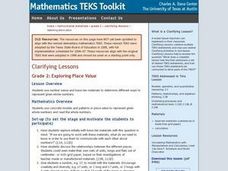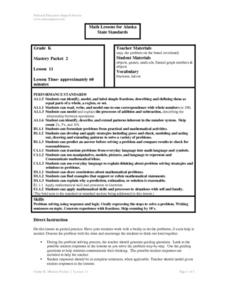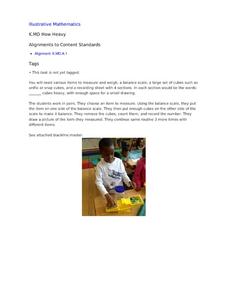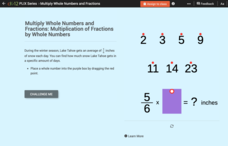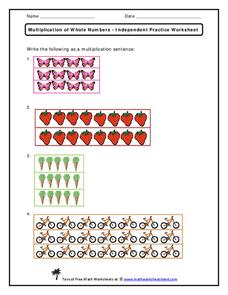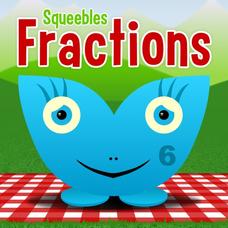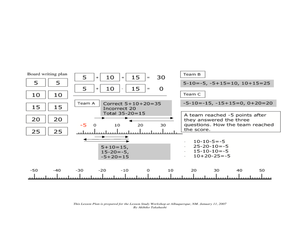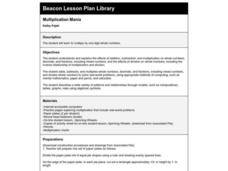Curated OER
Grade 2: Exploring Place Value
Creative problem solving is fun and helps kids conceptualize content. They use grid paper, manilla paper, and markers to cut, draw, and show given double-digit numbers as many ways as they can.
Curated OER
Fraction Problem Solving Process
Help your charges solve a variety of fraction and skip counting problems using a problem solving process. As a class they work through a fraction problem step-by-step, and discuss a real-life connection to the problem. Students then play...
EngageNY
Networks and Matrix Arithmetic
Doubling a network or combining two networks is quick and easy when utilizing matrices. Learners continue the network example in the second lesson of this series. They practice adding, subtracting, and multiplying matrices by a scalar...
Illustrative Mathematics
3-D Shape Sort
From the apple on your desk and the coffee cup in your hand, to the cabinets along the classroom wall, basic three-dimensional shapes are found everywhere in the world around us. Introduce young mathematicians to the these common figures...
Council for the Curriculum, Examinations and Assessment
Morals, Values and Beliefs
Your personality is based on the things you believe in, the morals you abide by, and the values upon which you make your decisions. Delve into a set of lessons about values and moral framework with your eighth graders as...
Illustrative Mathematics
Planes and Wheat
Understanding government spending is difficult. The number of variables can be enormous. In the corresponding resource, number crunchers are given one equation related to government spending with a number of variables. Your class is...
Curated OER
Study Buddies: Relating Multiplication And Division
These acitivities are designed for two! With a partner, problem solve and calculate the answers to fifteen word problems or mathematical equations. Scaffolding and coaching are included, and as an extension learners are prompted to...
Penguin Books
An Educator’s Guide to Ruta Sepetys
Historical fiction novels give readers a chance to step into someone else's shoes. An educator's guide from Penguin Common Core Lesson Plans provides resources to accompany three historical fiction novels written by Ruta Sepetys: Between...
Curated OER
How Heavy
Break out the balances for this primary grade lesson on weight measurement. Using common elementary school manipulatives like unifix or snap cubes, young mathematicians determine the weight of four different classroom objects. A graphic...
Illustrative Mathematics
Running Around a Track II
On your mark, get set, GO! The class sprints toward the conclusions in a race analysis activity. The staggered start of the 400-m foot race is taken apart in detail, and then learners step back and develop some overall race strategy...
CK-12 Foundation
Multiplication of Whole Numbers by Fractions: Multiplication of Fractions by Whole Numbers
An interactive challenges mathematicians to multiply fractions by whole numbers. A model provides a clear visual aid in preparing whole numbers to be multiplied. Six questions include multiple-choice, fill in the blank, short answer, and...
Illustrative Mathematics
Representing Half of a Circle
Geometric shapes make great visual models for introducing young mathematicians to the concept of fractions. Looking at a series of four circles, students are asked to determine whether or not one half of each circle is shaded. To support...
Curated OER
Three-Digit Number: Hundreds Place
Looking at the image of two sets of base ten blocks, learners determine which represents the number shown. This process is fully explained just below the problem. Use for review or extra practice.
Curated OER
Insect Models
Students explore insects and have many opportunities to discuss, reflect, and record their explorations individually and in groups. They then make models of the insects as outlined in the lesson.
Curated OER
Decomposing Numbers Step-By-Step
Here are two addition-related exercises. However, bear in mind, the explanations are featured below each of them. Use this as an all-class warm up, revealing the explanations if and when you see fit. First, examine the four sets of...
Curated OER
Multiplication of Whole Numbers
Rather than simply have your scholars memorize multiplication facts, be sure they understand the process behind each equation. There are four arrays of objects here; mathematicians write a multiplication sentence for each. Next, they...
Key Stage Fun
Squeebles Fractions
We are not exactly sure what a Squeeble is, but apparently they love cake and fractions, and your little bakers-turned-mathematicians will also. This app focuses on the basics of fractions including modeling fractions, equivalent...
K-5 Math Teaching Resources
Large Five Frames with Dots
Enhance young mathematicians' counting strategies using this large five frames printable. Here, you'll find a large one by five array with red counters to support adding and subtracting through visual images of numbers one through...
Curated OER
Commutative Property
First graders use various models to learn the Commutative Property of Addition. In this Commutative Property lesson, 1st graders use other students, counters, balances, and dominoes to apply the addition property. Students solve addition...
Curated OER
The Sum of All Angles
Students add up the different angles using the angle addition postulate. In this geometry lesson, students differentiate between interior and exterior angles. They calculate the different angles for triangles and use proof to show their...
Curated OER
Adding and Subtracting Integers
Middle schoolers use discs in order to add and subtract integers. There are manipulatives present so kinesthetic learners can access the curriculum. They also review the concept of the opposite of positive and negative numbers.
Curated OER
Playing Math Fever
Pupils complete activities to learn notation and uses for positive and negative numbers. For this number system lesson, learners play a game similar to Jeopardy to learn how to solve problems with positive and negative numbers.
Curated OER
Alexander, Who Used to be Rich Last Sunday
What a great way to incorporate Judith Viorst's story, Alexander, Who Used to Be Rish Last Sunday, with a math lesson on money. Second graders listen to the story being read while the teacher stops to record each time Alexander spends...
